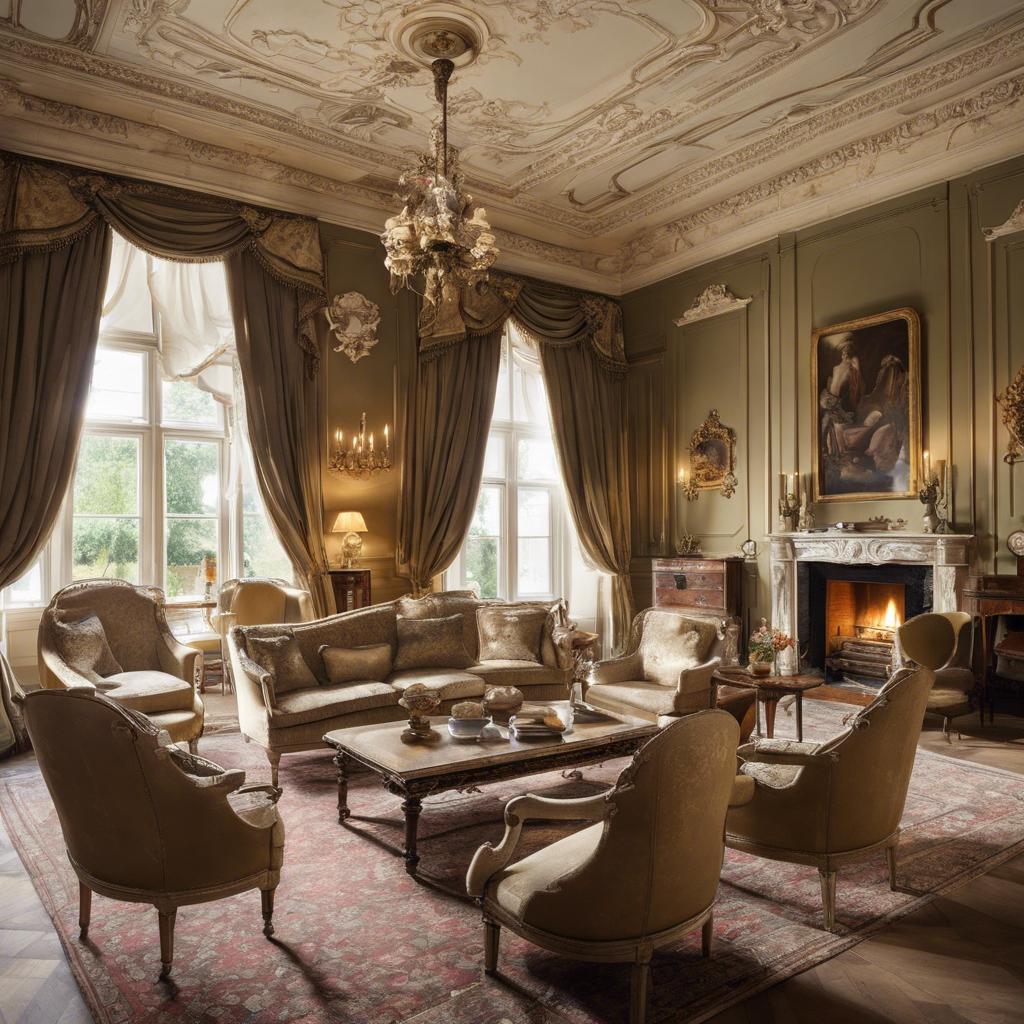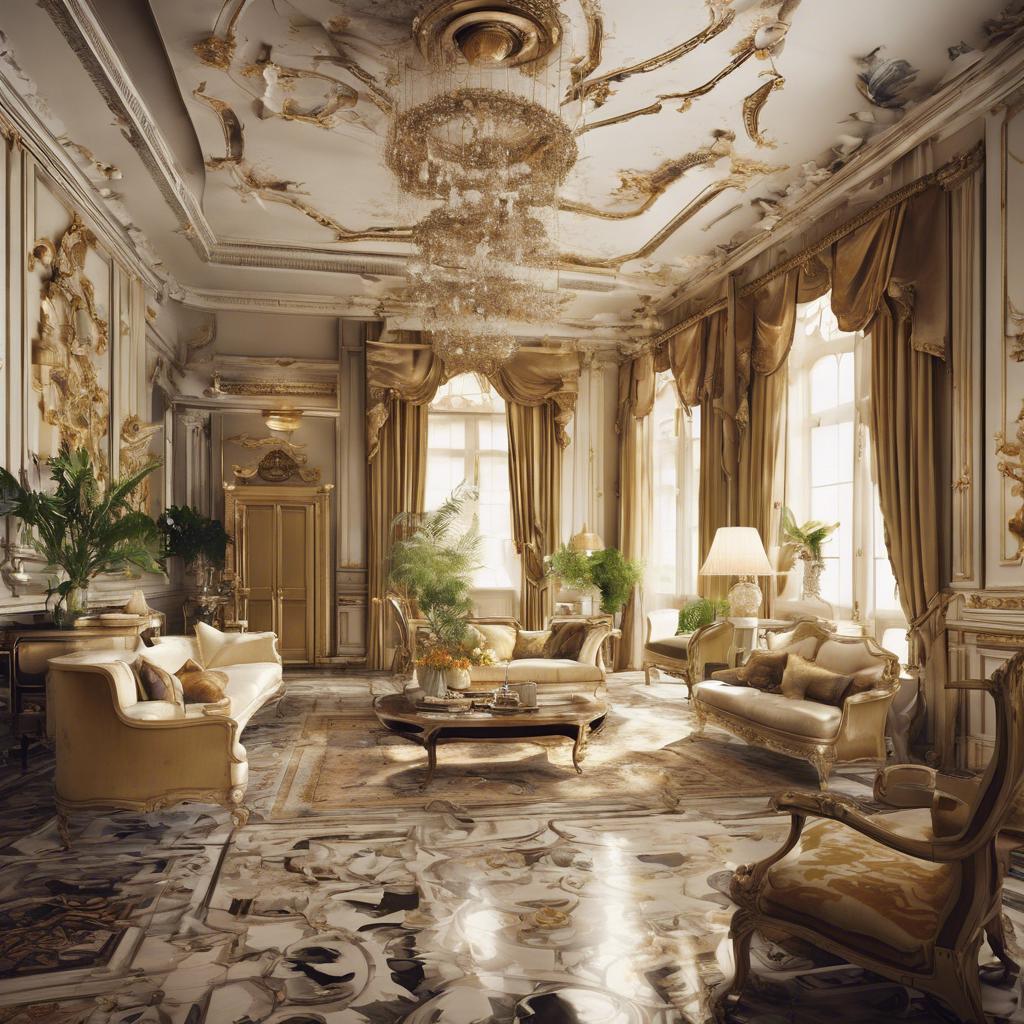During the early 19th century, the Regency era in England marked a period of elegance and refinement in interior design. Influenced by the tastes of the Prince Regent, later King George IV, this era saw a shift towards neoclassical and romantic styles in furniture, décor, and architecture. Join us as we explore the opulent aesthetic of Regency era interior design and its lasting impact on the world of decorative arts.
Step Into the World of Cheryl Bolen
Dive into the enchanting stories of love, intrigue, and elegance set in the Regency Era. Cheryl Bolen's novels offer timeless romance and captivating tales that will leave you wanting more.
Explore Cheryl Bolen's Books Now
Elegant Aesthetics of Regency Era Interior Design
The Regency Era interior design is characterized by its elegant aesthetics, which combine classical elements with a touch of refinement and sophistication. During this period, which spanned from 1811 to 1820 in England, interior design was heavily influenced by the style of the French Empire and the Neoclassical movement. This resulted in interiors that were both grand and tasteful, with a focus on clean lines, symmetry, and luxurious materials.
In Regency Era interior design, key elements such as chandeliers, ornate mirrors, and intricate moldings were used to create a sense of opulence and grandeur. Furniture was often made of mahogany or rosewood, with delicate carvings and rich upholstery adding to the overall elegance of the space. Soft, muted color palettes such as pale blues, greens, and pinks were popular choices for wall coverings and fabrics, creating a sense of calm and sophistication.
the Regency Era interior design exudes a sense of refinement and sophistication that is still admired and emulated today. By incorporating classic elements with a modern twist, this timeless style continues to be a popular choice for those looking to create a luxurious and elegant living space.
Luxurious Fabrics and Ornate Furnishings
The regency era was a time of opulence and grandeur, characterized by that adorned the homes of the elite. Silk, velvet, and satin were commonly used to create sumptuous draperies, upholstery, and bedding, adding a sense of richness and elegance to interior spaces.
Elaborate patterns and intricate designs were also popular during this period, with ornate furnishings such as chandeliers, gilded mirrors, and intricately carved furniture becoming staples of regency era interior design. These decorative elements were often used to create a sense of grandeur and sophistication, reflecting the wealth and status of the homeowners.
Regency era interiors were characterized by a harmonious blend of classical and neoclassical design elements, with an emphasis on symmetry, balance, and proportion. Rooms were often decorated in soft, pastel colors such as pale blues, pinks, and greens, creating a sense of tranquility and elegance. regency era interior design was a celebration of beauty, luxury, and sophistication that continues to inspire designers and homeowners alike.
Incorporating Classical Architectural Elements
into Regency era interior design can elevate the aesthetic of any space, adding a touch of elegance and sophistication. Drawing inspiration from the architecture of ancient Greece and Rome, Regency interiors are characterized by clean lines, symmetry, and a sense of grandeur.
One key element to consider when aiming for a Regency era look is the use of columns. Columns were a prominent feature in classical architecture and were often used in Regency interiors to create a sense of scale and structure. Whether fluted or smooth, columns can be incorporated into various spaces such as entryways, living rooms, or dining rooms to add a touch of grandeur.
Another classical architectural element to consider is the use of pediments. Pediments are triangular structures that sit atop columns or doorways, adding a sense of drama and elegance to a space. Whether adorned with intricate carvings or left plain for a more minimalist look, pediments can be a striking addition to any Regency era interior.
Tips for Recreating Regency Era Style in Modern Homes
In order to recreate the elegant and sophisticated style of the Regency Era in your modern home, there are several key elements to consider. First and foremost, focus on incorporating classical architectural details such as cornices, ceiling roses, and grand fireplace surrounds. These features will instantly transport you back to the early 19th century and set the tone for a Regency-inspired interior.
When it comes to color palette, think soft pastels and elegant neutrals. Opt for shades like pale blues, soft pinks, and dove greys to create a sense of lightness and airiness in your space. For a more dramatic look, consider incorporating deeper tones such as emerald green or burgundy for a touch of regal sophistication. Remember, the Regency Era was all about refinement and luxury, so don’t be afraid to embrace bold colors and rich textures in your decor.
Furniture plays a crucial role in achieving the Regency style. Look for pieces with delicate lines, tapered legs, and intricate detailing. Think of upholstered chairs with curved backs, ornate side tables, and elegant chaise lounges. To complete the look, add in decorative elements such as gilded mirrors, crystal chandeliers, and porcelain vases. By paying attention to these key details, you can truly bring the timeless elegance of the Regency Era into your modern home.
In Conclusion
the regency era marked a transformative period in interior design, characterized by elegance, refinement, and a departure from the ornate styles of the past. From the use of classical motifs to the incorporation of luxurious fabrics and furniture, regency design continues to inspire and influence contemporary interiors. By understanding the principles and elements of this historic era, we can bring a touch of regency sophistication into our own homes, creating spaces that are timeless and elegant. As we pay homage to this distinguished period in design history, let us continue to draw inspiration from the past to create spaces that transcend time and exude an air of sophistication and grace.


